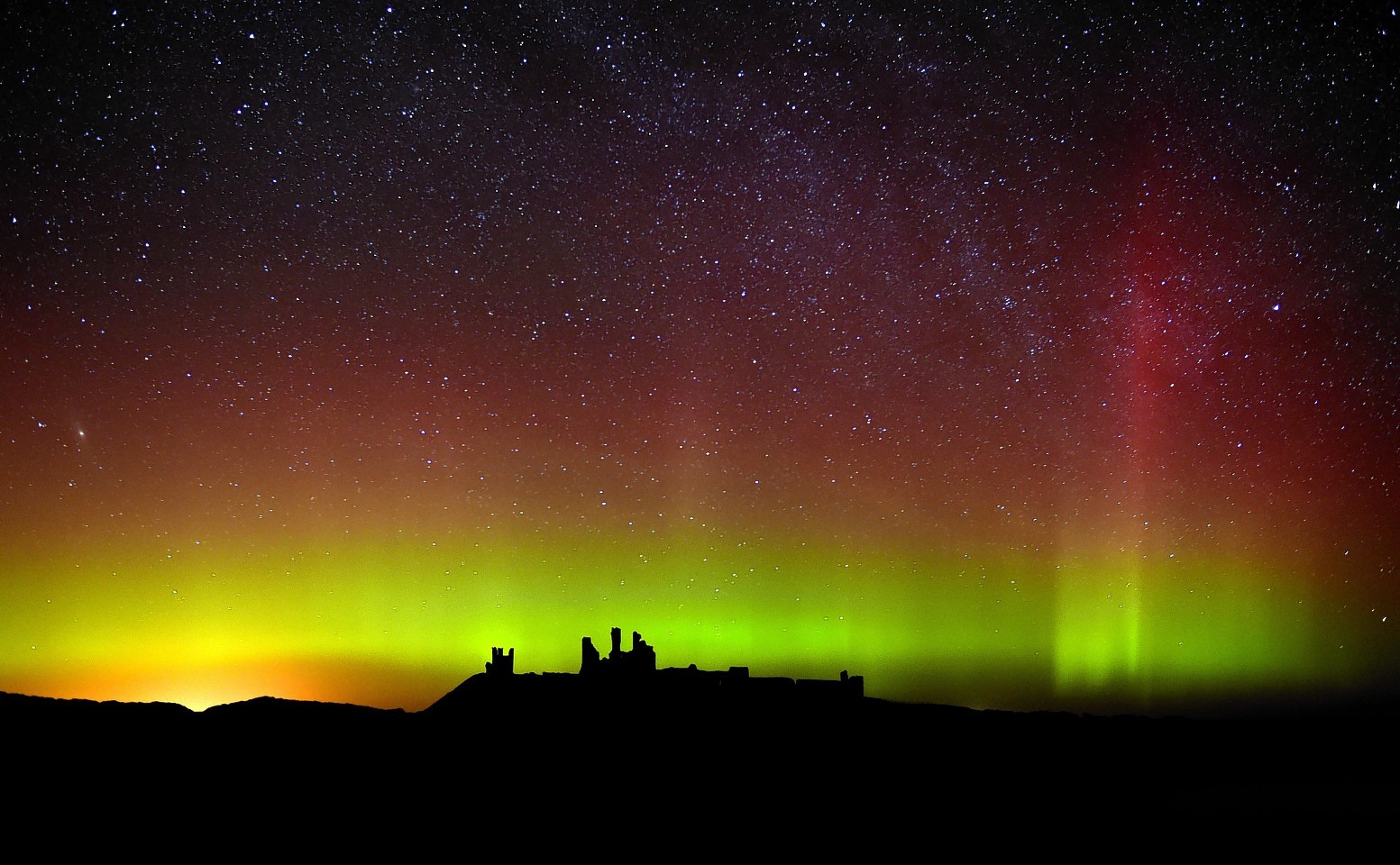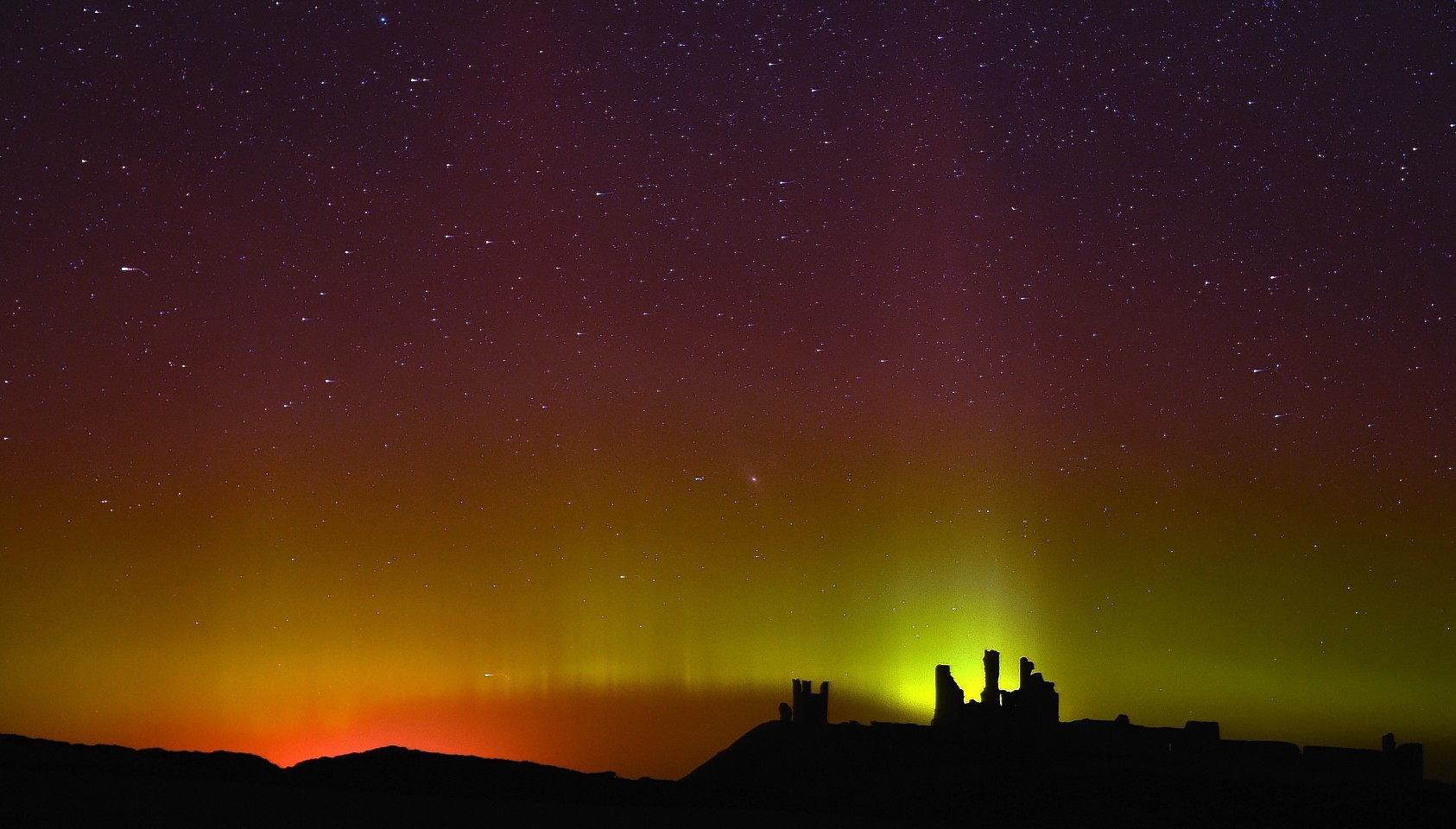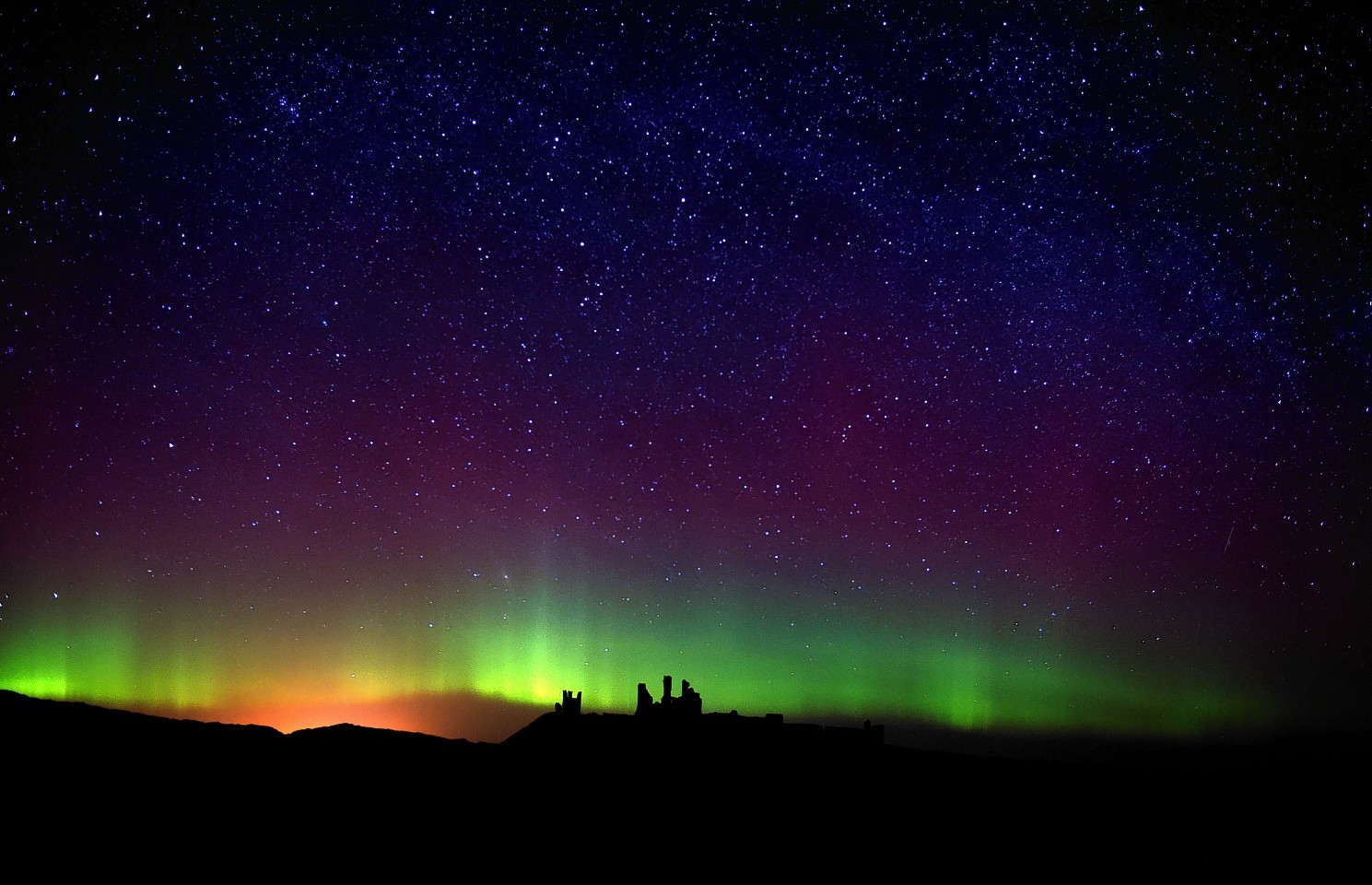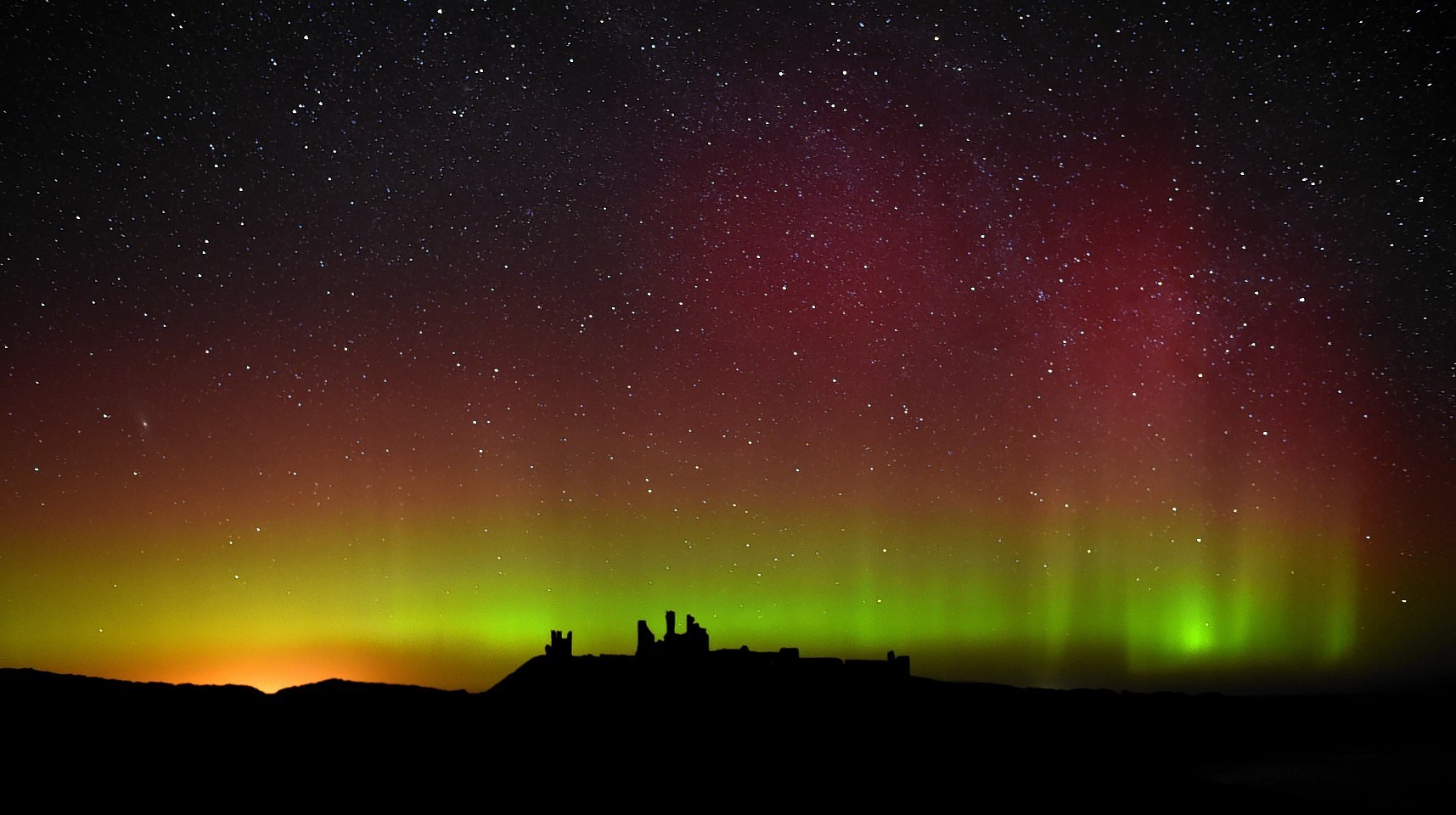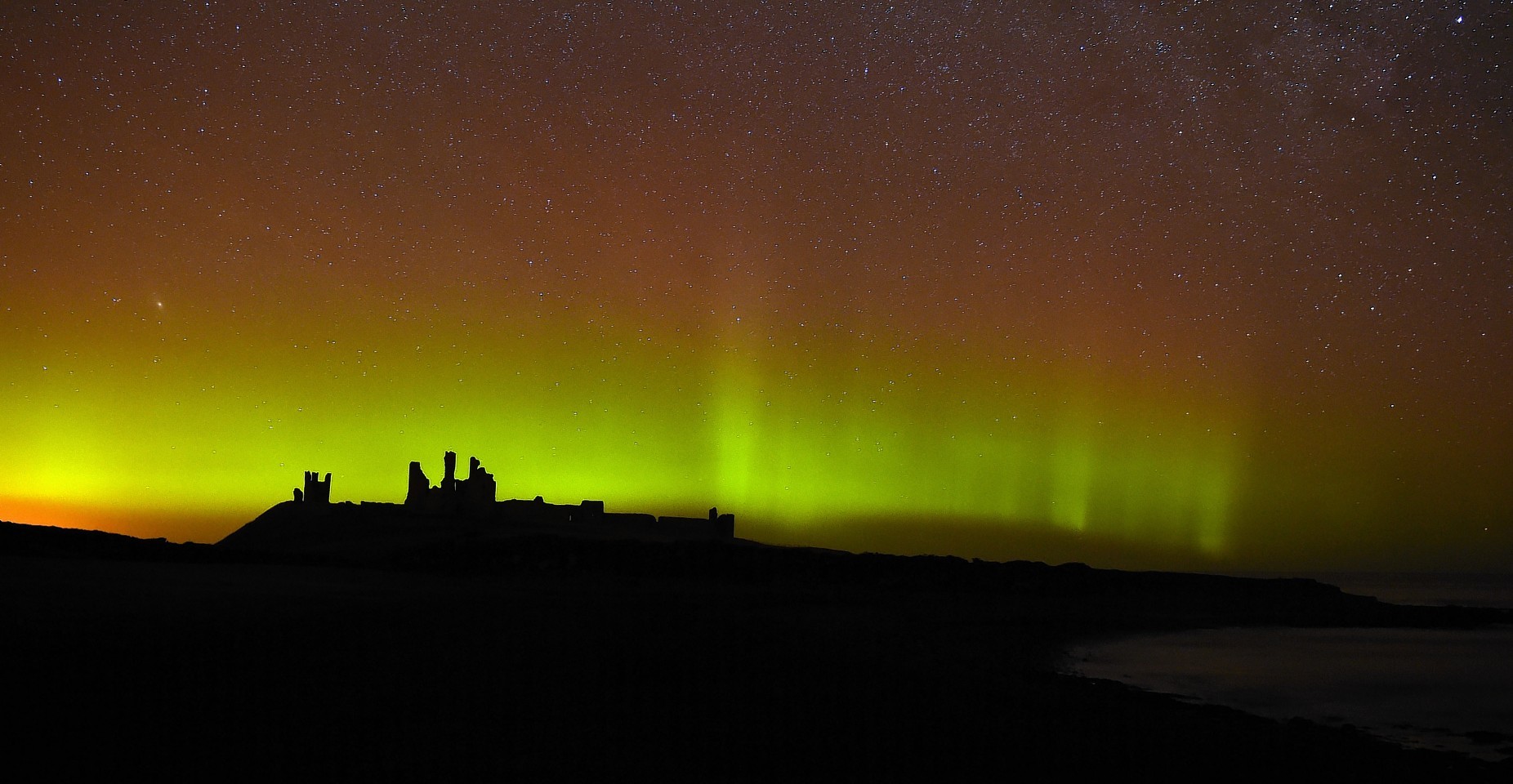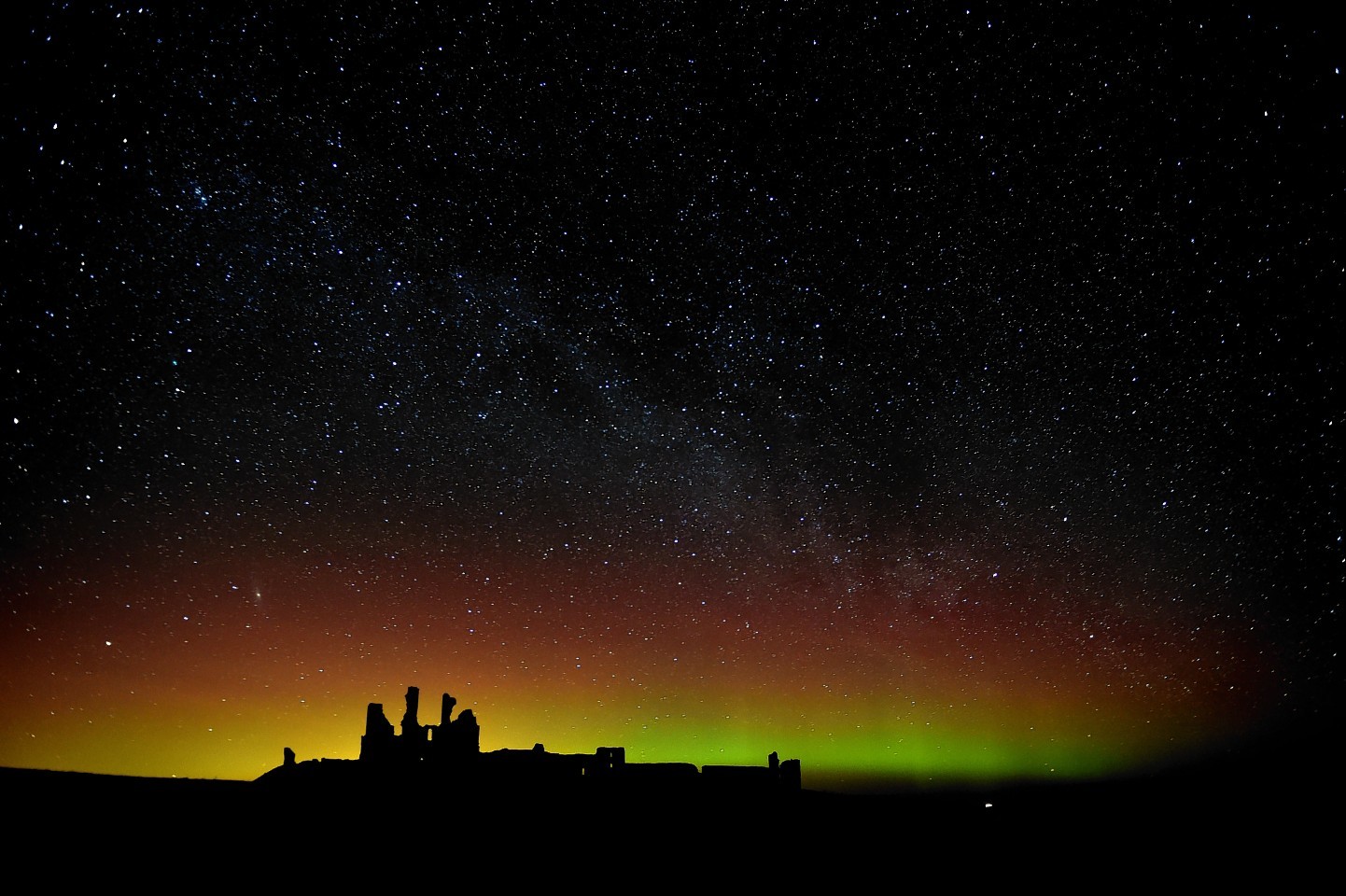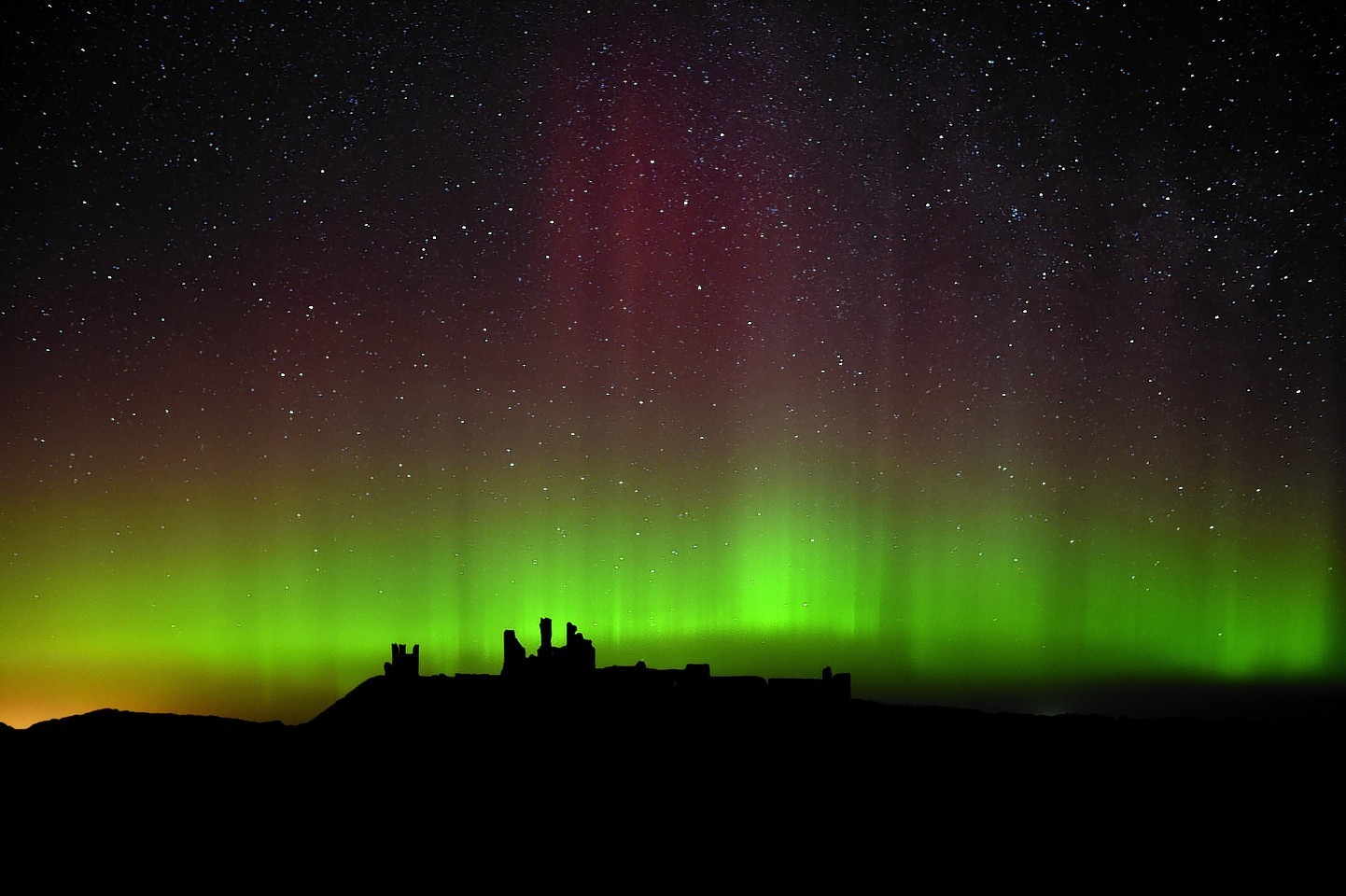Sky watchers acclaimed the latest display of the Northern Lights as the best for years.
The spectacle was captured by aurora-chaser and Press Association photographer Owen Humphreys who was positioned by Dunstanburgh Castle, on the Northumberland coast.
The thrilling show, quite visible to the naked eye, lasted for several hours, as pillars of light danced across the dark and moonless night.
Mr Humphreys, 42, and from Whitley Bay, North Tyneside, travelled an hour north with relative 16-year-old Matthew O’Connor, who is studying for a GCSE in photography.
He said: “We knew there was a 20% chance of seeing the aurora but we went up to take pictures of the Milky Way.
“When it started it came out of the blue and instead of staying for three or four hours we were there for about seven.
“There was a small show around 10pm, then it got stronger after midnight and at 2am it went crazy. There were a lot of greens and some pink colours in the sky.
“There were swirling and dancing pillars of light going 100ft in the air. It was unreal and the best show I have seen for years.”
That sentiment was shared by Kielder Observatory, which tweeted “we had the best aurora display in years”.
The natural phenomenon is caused by charged particles colliding in the Earth’s atmosphere and is seen above the magnetic poles of the northern and southern hemisphere.
Before a display, electrons and protons are hurled from the sun’s atmosphere and are blown towards the Earth by the solar wind.
Often these particles are then deflected by the Earth’s magnetic field but as it is weaker at either pole, some particles enter the atmosphere and collide with gas particles.
Matt Robinson, a 29-year-old volunteer at Kielder Observatory, said the solar wind takes three days to reach Earth, so aurora watchers have some notice about when the lights might appear strongly.
He said: “It’s hit and miss and you have to hope everything else works in your favour. You need clear skies, the Earth’s magnetic field has to be pointing in the right direction… it’s complicated but it is worth it when it comes off.”
Aurora watchers also need to head out of the city and away from light pollution which bleaches out the display, as does bright moonlight.
Mr Robinson added: “Unless it is a very strong storm, it is quite difficult to see in the city as the lights will drown it out.”
Usually the best spots to see the lights are those places close to the North Pole, such as Iceland and Norway.
In the southern hemisphere, they are known as the Aurora Australis and can often be mirror-like images that occur at the same time as in the north.
